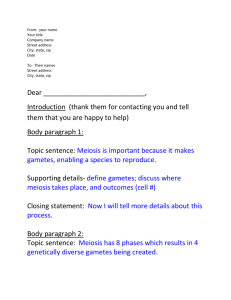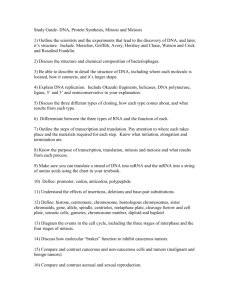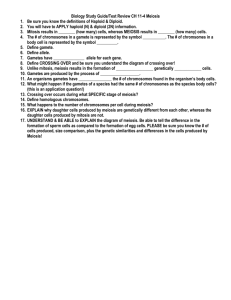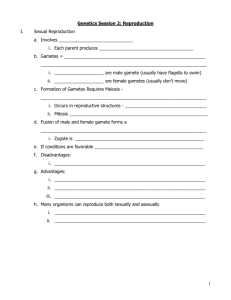Meiosis - eduBuzz.org
advertisement
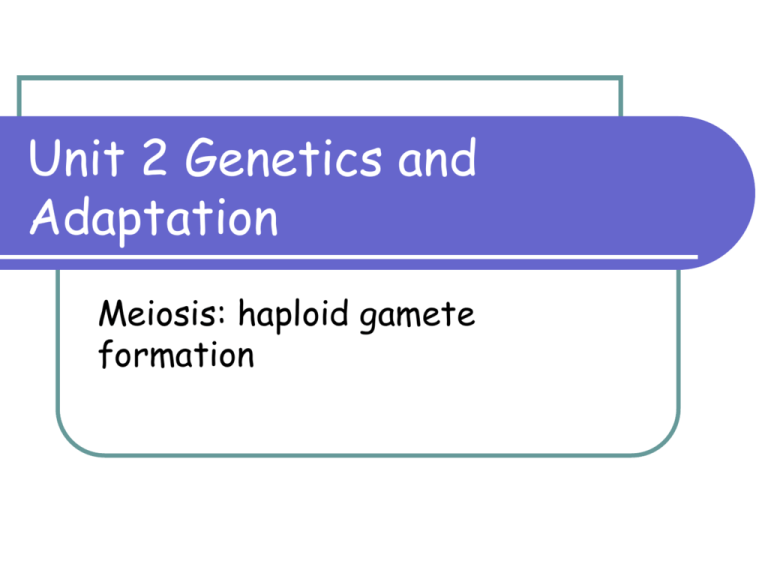
Unit 2 Genetics and Adaptation Meiosis: haploid gamete formation Meiosis: haploid gamete formation By the end of this lesson you should be able to do the following: State that meiosis is a type of cell division that produces gametes. Explain the meaning of the terms diploid and haploid in relation to gamete mother cells and gametes. State the location of gamete mother cells in mammals and flowering plants. Describe the two consecutive divisions of meiosis with the use of diagrams. Meiosis Meiosis is a type of cell division which produces gametes. Meiosis occurs only in gamete mother cells and it results in variation. Gamete mother cells Gamete mother cells are diploid. This means they contain two sets of chromosomes (2n). Gamete mother cells undergo meiosis to produce gametes. Gametes Gametes (sex cells) are haploid which means they contain one set of chromosomes (n). Gametes fuse together during fertilisation to form a zygote. Task Copy and complete the following table using p82 of the Higher Biology text book. Location of gamete mother cells Mammals Flowering plants Gametes Task Without using your notes, work in pairs to complete the “haploid / diploid cell” diagram from your pack. Process of meiosis Meiosis consists of two consecutive divisions. The first reduces the chromosome number by half. The second produces four genetically different gametes. First meiotic division Task Complete the “meiosis- 1st division” diagram from your pack. Use p 80 of the Higher Biology text book to help. Second meiotic division Task Complete the “Meiosis- 2nd division” diagram from your pack. Use p81 from the Higher Biology text book to help. Can you do the following? State that meiosis is a type of cell division that produces gametes. Explain the meaning of the terms diploid and haploid in relation to gamete mother cells and gametes. State the location of gamete mother cells in mammals and flowering plants. Describe the two consecutive divisions of meiosis with the use of diagrams.
